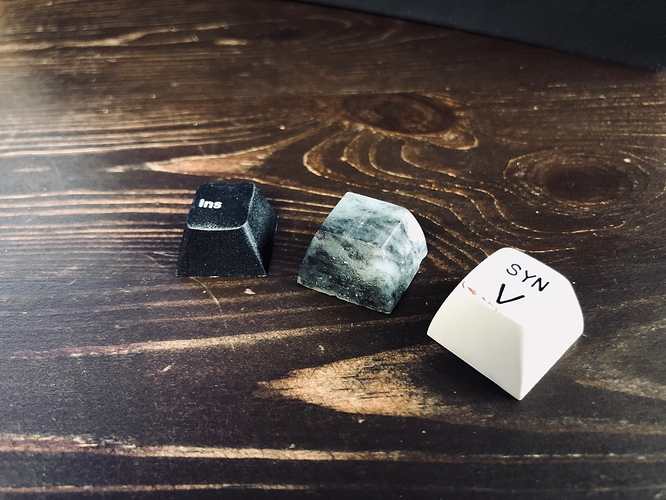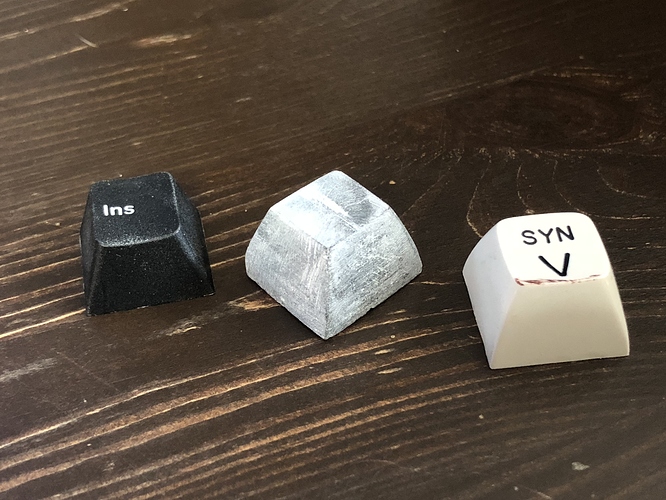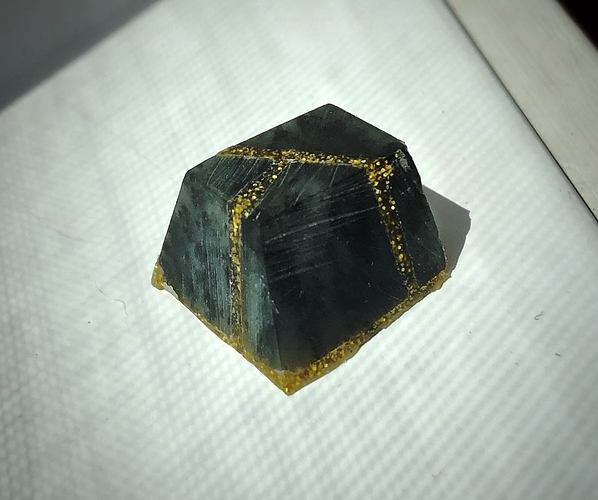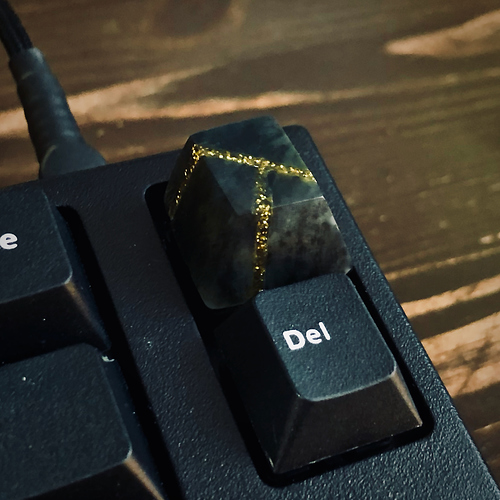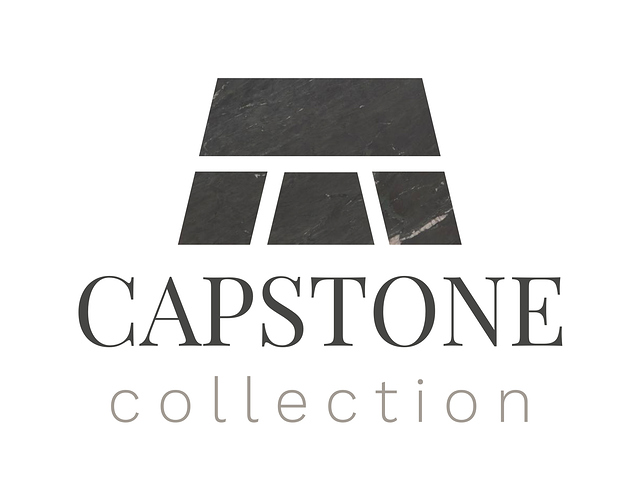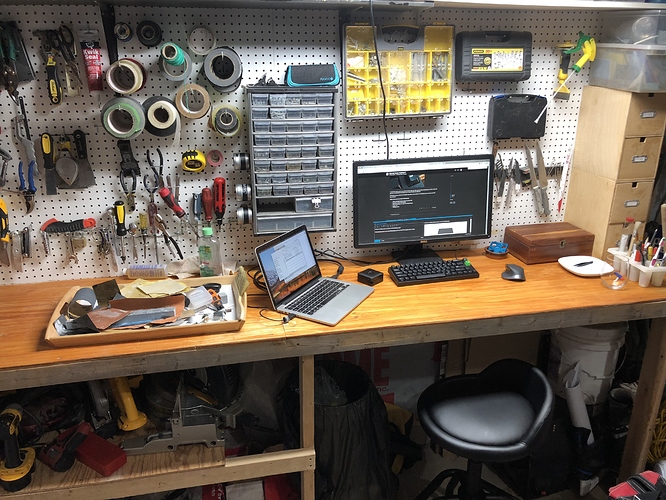Does anyone know of makers/collections of “carved stone” keycaps ?
I’m on my way to purchase soapstone and give is a try, and I’m wondering if we dont see this much because its a try and failed approach.
I don’t know man. Natural stone is porous, and attracts dirt and moist very easily. It looks like the exact opposite of what you need for a keycap.
But yeah, I would sure want to take a look at a finished product, why not.
Couldn’t you “seal” it with epoxy/resin/etc, though?
Also, have you seen the concrete keycaps? 
Leather keycaps … patina … and shit.
How heavy is it? Like Rama’s alu caps heavy?
I don’t know much about Rama alu (beginner here) but this one is 8 grams. It’s not hollow out yet but it’s probably close to the end result. Are heavier cap prefered or not usually ?
I think a cast stem that’s attached after hollowing the stone would be best. It’s going to be hard to carve a stem that’s sturdy from stone.
Like most everything in this hobby, it is all down to preference. I was just curious how much you would have to account for weight on the switches. Sounds like if you get some springs that are 5-10g heavier for whatever you put the cap on it would be great. For anyone curious like me, I just weighed a Rama XO cap (in Seattle meetup blue) at 5g, so I suspect this will be pretty close once the insides are cleared out.
100% agree with this. Stems have always been a problem with “exotic” materials for caps. Might as well skip straight to the end where you use cast stems. ¯\_(ツ)_/¯
Tell me how this works out for you! I have some soapstone lying around, so if it works alright for you I might give it a go!
For this prototype i was planning on cutting a stem from some plastic keycap and trying to glue it with with some cement epoxy. I might have to test a bunch of different types of glue. This type of stone is reputed to not react with much.
As for the final choice for stem material I’m really not sure. Plastic would just cheapen the whole project. But I dont what else I could obtain or mold myself (never molded anything).
For the hollowing out, I’ll have to wait for some small rotary tool I ordered.
This is awesome !! Keep an eye out for the SP grab bags that will go live soon (might already have)… possibly a good source for the stems…
Tested gold inlays using epoxy and cheap glitter. Already ordered gold leaves to see if it can be used in resin. Sanding the stone and the resin with paper creates uneven results. I think I’ll need to used a electric sander with better grit and go slower.
Prototype 001 Update:
- Resin bonded well to the stone, but process was too complex
- Repolished with new 2500 grit. Finish close to end goal.
- Edges are a little sharper. Which makes them a little fragile.
- Glued on zinc stem. I think I figured out how to glue it on straight (harvested from metal keycap)
I would have liked to show more photos, but the right side little ugly hole (had not fully figured out the rotary tool yet) and a small portion of the inlay was not deep enough and detached.
Otherwise I’m done with this first iteration and will be stress testing it on my ESC for a few weeks to see the wear and tear.
Tests in the works in prototypes 002 and 003:
- Gilding with gold sheets instead of epoxy inlay
- Hardening trough heat process
- Different technique for easier and thinner inlays
- Larger size
- Facetted profile
Worked on setting up new lighting in the workshop and completed the logo/branding. Also, a friend carver told me he will be bringing me sample of Kisii stone, which he received from friends in Kenya. It’s supposed to have similar properties to Steatite but a little harder.
Kintsugi keycaps! Looks great already but you might be able to get a better result with a metallic look resin, or with a mica powder additive.
Well… I would not dare call it kintsugi since these caps are never broken and it’s not done using lacquer. But I’m indeed planning on going in that direction in later iterations.
I have doubts about doing it with Steatite. Early “breaking” tests is showing me that in splinters in to many small parts (crushed instead of broken). But I haven’t tested with a fully hollowed out keycap and applying pressure from within. Also, I have to see if the material bounds to lacquer… maybe I’ll have to carve those caps out of cooked pottery stone.
Another problem is that the kintsugi tutorial I found online contradicts themselves in many details and are not really geared toward very small repairs.
_For the curious: Kintsugi is the japanese art of repairing a cherished pottery with lacquer and gold to make it even more valuable/beautiful than before it was broken: https://www.google.ca/search?q=kintsugi&rlz=1C5CHFA_enCA750CA750&source=lnms&tbm=isch&sa=X&ved=0ahUKEwjOyMuS7LfcAhVooFkKHSkcCbsQ_AUICigB&biw=1813&bih=960_
hi its 2019 now and im just found this lol. im very excited of your stone keycaps prototype. can u show the stem of your keycaps? realy excited to try making one of yours keycaps from carved stone
